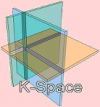September 2006 (36 months)
The overall objective of the AGENT-DYSL project is to contribute in narrowing the gap between good and poor (due to dyslexia) readers. AGENT-DYSL's main target group is school-aged children. AGENT-DYSL's approach towards obtaining the objective is to develop a "next generation assistive reading system" and to incorporate it into learning environments. The AGENT-DYSL project addresses a main target of the e Inclusion Strategic objective, which is the development of next generation assistive systems that empower persons with (in particular cognitive) disabilities to play a full role in society, to increase their autonomy and to realize their potential. To effectively contribute to this goal, the project focuses on the development of novel technologies and tools for supporting children with dyslexia in reading. One of the main objectives of AGENT-DYSL is the incorporation of these prominent features into assistive reading software, and the move to the next generation of assistive software. The features include automated user modelling, age-appropriate and dyslexia-sensitive user interfaces, automatic user progress monitoring, automatic user’s psychological and emotional state tracking, knowledge assisted reasoning and evaluation of information, personalized user interfaces that adapt to the individual requirements of each dyslexic learner. Moreover, the project apprentices the role of accommodative educational environments in obtaining the best results for inclusion purposes; in particular it recognises that learners’ diversity is a strength for collaborative training environments (e.g., schools, education centres, work) and that heterogeneous communities (groupings) have a built-in dynamic that can bring about development in learners with widely different potentials and competence profiles. In this framework, AGENTDYSL also focuses on accommodative education environments for dyslexic learners, interweaving the above-mentioned technologies for evaluation of both the individual dyslexic learner and the context of the learning environment, with a pedagogical perspective and testing in three real environments in United Kingdom, Denmark and Greece.
Funded under: FP6-IST




